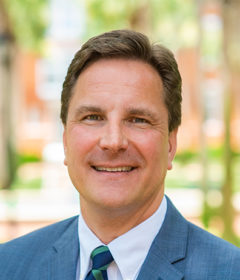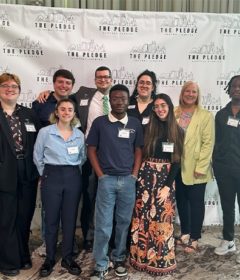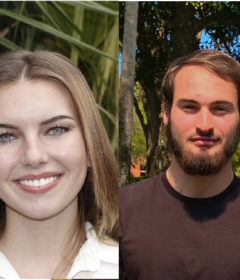Water Institute Hosts Environmental Secretary
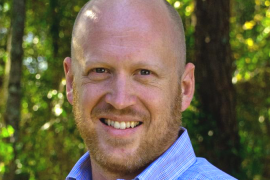
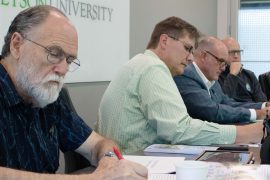
Noah Valenstein, secretary of the Florida Department of Environmental Protection, visited the Stetson campus in DeLand on Wednesday, March 14, for one of his “listening sessions” about important environmental issues facing the state.
The two-hour meeting was hosted by Stetson’s Institute for Water and Environmental Resilience and included representatives from the City of DeLand and Volusia County, along with other environmental leaders.
The primary focus of the meeting was springs’ protection.
“It was an honor to join this diverse group of stakeholders to discuss protecting and restoring our natural resources for future generations,” Valenstein commented after the meeting. “Listening to a community’s connection to the environment is an important part of the Department’s work to protect our springs, rivers and land.”
Valenstein’s department currently is reviewing management plans for Blue Spring, DeLeon Springs and Gemini Springs. Under the Florida Springs and Aquifer Protection Act, DEP is required to adopt “basin management action plans” for each spring prior to July 1, 2018. the institute at Stetson has been fully engaged in the review and commentary of the springs’ plans for more than two years.
The DeLand campus is within the Blue Spring basin and may well be impacted by the new rules. Professor of Biology Kirsten Work, Ph.D., who attended the meeting, has been conducting research and monitoring efforts at Blue Springs with her students for many years.

Institute Executive Director Clay Henderson delivered a presentation on springs’ protection efforts in Volusia County and summarized comments that were developed in coordination with faculty members affiliated with the institute. DeLand Public Services Director Keith Riger offered his view on the “high degree” of cooperation among local governments in responding to the plan. Volusia County Environmental Services Director Ginger Adair and county Utilities Director Mike Ulrich discussed the need for coordination on the removal of septic tanks in areas where they are contributing to aquifer pollution.
Most of the participants discussed the need for stable funding for springs’ protection and conservation land acquisition. Valenstein touted the success of $50 million-a-year spending for springs’ restoration from Amendment 1 funds, which were approved by voters in 2014.
Henderson said he was pleased that Stetson could host the session, as well as the fact that Stetson was included in a similar meeting in Brevard County to discuss the Indian River Lagoon. Both springs’ and lagoon restoration are primary focus areas for the institute.
“The institute works best when we can convene different stakeholders to discuss policy options for protecting our environment,” Henderson said.

